Clarity,
Office 17622,
PO Box 6945,
London.
W1A 6US
United Kingdom
Phone/ Voicemail:
+44 (0)20 3287 3053 (UK)
+1 (561) 459-4758 (US).

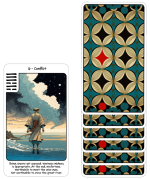
Thanks, Liselle.I think the backs are pretty, for what that's worth. (I'm incapable of thinking straight about probababilities even on a good day, and today has worn me out, so I have zero comments other than that.)
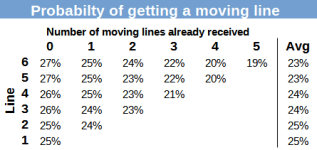
I find this stunningly beautiful- form folding and merging with form and framed solidly with jet black! What a dance!!One thing I always find difficult, is to decide on the back of the card.
Is this one too intricate? Maybe something simpler would fit better?
View attachment 5082
Yes, that was one of my favorite attempts ...I find this stunningly beautiful- form folding and merging with form and framed solidly with jet black! What a dance!!
Physical manifestations of such trigrams might be dangerousFinally getting back here after being without the internet for a few days - Thunder and Wind caused a neighbor’s tree to fall over and take out the power line.
That is a good option and would be equivalent to using the four "Dutch Sticks".Thinking about how you might come up with change lines. What if you make it your ritual that you shuffle the cards three times, cut them once, and then turn over the top card to be the primary hexagram and then the bottom card to be relating hexagram?
As I said up above, I'm clueless about this, but here's some clueless questions anyway...Whereas with three coins or the yarrow stalks, the probability to get a moving line is 25% for any line
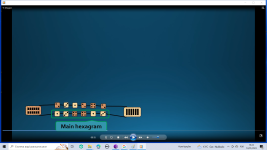
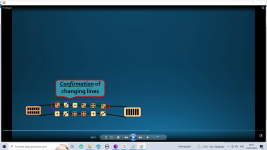
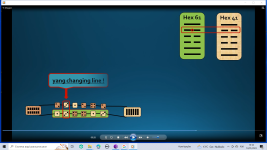
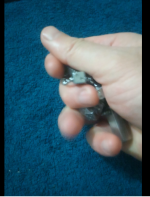
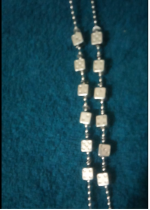
As I said up above, I'm clueless about this, but here's some clueless questions anyway...
- Don't things have to add up to 100% somehow? How can you have six things and a 24-25% chance of each?
- I don't think line position is what it's figured on, is it? I thought it was moving yin, moving yang, unmoving yin, unmoving yang. I've never seen odds described in terms of position. The odds of a certain line position being moving or not would be different for each hexagram depending on where the yin and yang lines are....I think.....(that sounds like a backwards way of putting it but hopefully you know what I mean).
Anything is provisional, from the font to the image style, to the fact that I want to add a way to properly cast hexagram (is it really a good idea?) so, please, feel free to comment on anything.
This is very interesting, @breakmov.Do you look at any hexagram cast method from the point of view of how practical and easy it is?
For 64 cards I believe it won't be practical. It works splendidly with fewer cards and that's way is the mechanism at the foundation of many of my cards dry. The stamps on this card (front/back);Returning to the theme of the deck of cards, I think that the option I left for the rectangular deck solves the "problem" of probabilitie
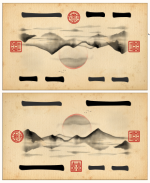
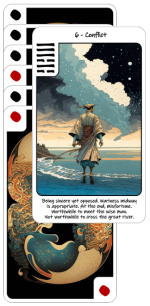
For those interested, using the back of the cards to get the moving lines have the following probabilities:
View attachment 5118
Whereas with three coins or the yarrow stalks, the probability to get a moving line is 25% for any line.
In other words, is 1% to 2% less likely to get moving lines in the upper trigram.
Would you consider this relevant?
Not sure what you mean. At the very least, knowing the probabilities is important so one can see that the outcome that just happened would be extremely rare, right?I wouldn't, no. The calculation of probabilities is a left-brain approach to understanding how events happen. I've personally witnessed events and oracle outcomes that staggeringly defy probability theory.
Thanks. I'll surely check to see how placing the number and name below the image would affect the overall look.Nice cards, btw. You could, if you wanted, put the number and name of the hexagram with the text under the art. It's not a suggestion, just an idea to consider.
Not the way I see it. I believe that things happen according to pattern, but I don't believe that the so-called 'laws' of probability even begin to describe the reality. I don't believe that things like probability, time, and cause-and-effect are anything more than constructs of the human mind for imposing a perceived order on what is essentially a far more complex reality. (That's one reason I like the I Ching - its yin/yang dynamism has a way to balance these things.)Not sure what you mean. At the very least, knowing the probabilities is important so one can see that the outcome that just happened would be extremely rare, right?
Well, all of our math knowledge is aimed at finding ways to describe and talk about things that are around us.Not the way I see it. I believe that things happen according to pattern, but I don't believe that the so-called 'laws' of probability even begin to describe the reality.
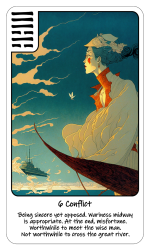

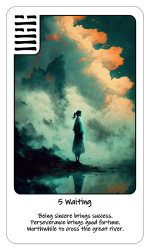
Clarity,
Office 17622,
PO Box 6945,
London.
W1A 6US
United Kingdom
Phone/ Voicemail:
+44 (0)20 3287 3053 (UK)
+1 (561) 459-4758 (US).